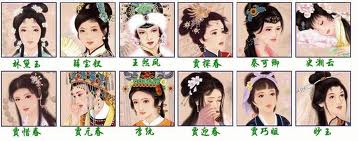Dream of the Red Chamber
Home ![]() Facts About China
Facts About China ![]() Four Great Classical Novels
Four Great Classical Novels ![]() The Story of the Stone
The Story of the Stone
Dream of the Red Chamber, or The Story of the Stone, is the greatest masterpiece of Chinese classical novels of the Ming and Qing dynasties. It has the most profound influence on later generations in literature.
The work is comprised of 120 chapters, the first 80 of which were written by Cao Xueqin (Tsao Hsueh-chin) in 18 century, and the remaining 40 by Gao-e (Kao Hgo).
Dream of the Red Chamber is a novel with great cultural richness. It depicts a multi-layered yet interfusing tragic world of humans through the eye of a talentless stone the Goddess used for sky mending.
Jia Baoyu, the incarnation of the stone, witnessed the tragic lives of “the Twelve Beauties of Nanjing”, experienced the great changes from the flourishing to decline of a powerful family and thus gained unique perception of life, the feudal system and culture as well as the mortal world.
The great literature success of Dream of the Red Chamber is remarkably reflected by the creation of characters with distinctive personalities and profound social culture, mirroring people in real life.
The success also lies in the breakthrough and innovation of traditional writing styles, completely breaking the mode of story-telling popular novels and greatly enriching the narrative art of novels, thus causing a far-reaching impact on the development of Chinese novels.
Its influence in the history of Chinese literature is so profound that it has spawned a large batch of works after its style. At the same time, numerous plays and dramas based on the novel have been released.
In recent years, movies, TV series and computer games have brought the great work to tens of thousands of households, sweeping the whole Chinese-speaking world.
The exceptionally superb creation of artistic characters and the richness of the thoughts in the novel have generated great interest in its reviews and research, forming a special subject dedicated solely to the research of the novel – Redology (the study on this novel).
 12 Beauties ofThe Story of the Stone
12 Beauties ofThe Story of the Stone
Translations
The Story of the Stone (first eighty chapters by David Hawkes and last forty by John Minford), Penguin Classics or Bloomington: Indiana University Press, five volumes, 1973–1980. ISBN 0-14-044293-6, ISBN 0-14-044326-6, ISBN 0-14-044370-3; ISBN 0-14-044371-1, ISBN 0-14-044372-X.
The Dream of the Red Chamber (David Hawkes), New York: Penguin Group 1996. ISBN 0146001761.
A Dream of Red Mansions (Gladys Yang and Yang Hsien-yi) Beijing: Foreign Language Press, three volumes, 1978–1980.
Dream of the Red Chamber (Wang Chi-Chen), abridged, largely translated in 1929, then augmented for publication in 1958. ISBN 0385093799.
Hung Lou Meng (H. Bencraft Joly), from the Gutenberg Project, Hong Kong: Kelly & Walsh, 1892–1893, paper published edition is also available. Wildside Press, ISBN 0809592681; and Hard Press, November 3, 2006, ISBN 1406940798.
Red Chamber Dream (Dr. B.S. Bonsall), Unpublished typescript. Available on the web.
The Dream of the Red Chamber (Florence and Isabel McHugh), abridged, which follows the German translation of Franz Kuhn. 1958, ISBN 0837181135.
Home ![]() Chinese Culture
Chinese Culture ![]() Four Great Classical Novels
Four Great Classical Novels ![]() Dream of the Red Chamber
Dream of the Red Chamber
More about China:
China Today Facts
More Fun China Facts
Chinese Language Facts
China Provinces
The Great Wall Facts
China Facts About Its Land and Seas

New York Pass With More than 50 Sttractions

Southern California CityPASS saves you 32% for Disneyland, Universal Studios and 3 other attractions





